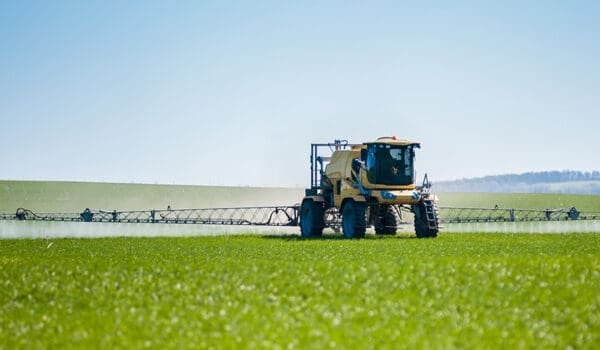Most of us know nitrous oxide as “laughing gas”, used for its anaesthetic effects. But nitrous oxide is also one of the main stratospheric ozone depleting substances – and we are releasing more of it into the atmosphere than previously thought.
Around half of the food produced in the world today is grown with the support of nitrogen fertilizers. Consequently, the use of fertilizers containing nitrogen have greatly enhanced nitrous oxide (N2O) emissions to the atmosphere during the last two decades.
Far from being an unharmful laughing gas however, N2O is actually the third most important long-lived greenhouse gas, after carbon dioxide and methane. And – according to senior scientist Rona L. Thompson from NILU – Norwegian Institute for Air Research emissions of N2O are increasing rapidly.
In a paper recently published in Nature Climate Change, Thompson and her co-authors present estimates of N2O emissions for 1998-2016, determined from three atmospheric transport models with atmospheric N2O observations from global networks.
Increasing use of nitrogen fertilizers is leading to higher N2O levels in the atmosphere
“We see that the N2O emissions have increased considerably during the past two decades, but especially from 2009 onwards”, Thompson says. “Our estimates show that the emission of N2O has increased faster over the last decade than estimated by the Intergovernmental Panel on Climate Change (IPCC) emission factor approach.”
In the study, Thompson et.al. states that N2O in the atmosphere has risen steadily since the mid-20th century. This rise is strongly linked to an increase in nitrogen substrates released to the environment. Since the mid-20th century, the production of nitrogen fertilizers, widespread cultivation of nitrogen-fixing crops (such as clover, soybeans, alfalfa, lupins, and peanuts), and the combustion of fossil and biofuels has increased enormously the availability of nitrogen substrates in the environment.
“The increased nitrogen availability has made it possible to produce a lot more food, Thompson explains. “The downside is of course the environmental problems associated with it, such as rising N2O levels in the atmosphere.”
Rate of increase has been underestimated
Thompson et al. found that N2O emissions increased globally by 1.6 (1.4-1.7) million tonnes of nitrogen per year (approximately 10% of the global total) between 2000-2005 and 2010-2015. This is about twice the amount reported to the United Nations Framework Convention on Climate Change based on the amount of nitrogen fertilizer and manure used and the default emission factor specified by the IPCC.
In their paper, Thompson et.al. argue that this discrepancy is due to an increase in the emission factor (that is, the amount of N2O emitted relative to the amount of N-fertilizer used) associated with a growing nitrogen surplus. This suggests that the IPCC method, which assumes a constant emission factor, may underestimate emissions when the rate of nitrogen input and the nitrogen surplus are high.
From their inversion-based emissions, Thompson et.al estimate a global emission factor of 2.3 ± 0.6%, which is significantly larger than the IPCC default for combined direct and indirect emissions of 1.375%.
From scientific methods to practical measures
The larger emission factor, and the accelerating emission increase found from the inversions suggest that N2O emission may have a non-linear response at global and regional scales with high levels of nitrogen input.
Thus, Thompson and her colleagues recommend using more complex algorithms and region-specific emission factors to estimate N2O.
So how can these new estimates help lower global N2O emissions?
“Our results suggest that reducing nitrogen fertilizer use in regions where there is already a large nitrogen surplus, will result in larger than proportional reductions in N2O emissions”, Thompson says. “This is particularly relevant in regions such as East Asia, where nitrogen fertilizer could be used more efficiently, without reducing crop yields”.



